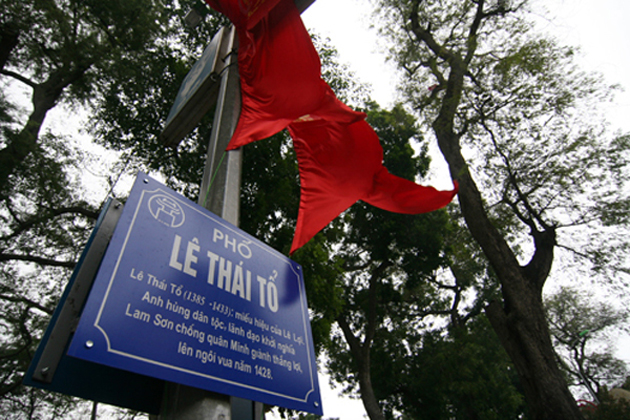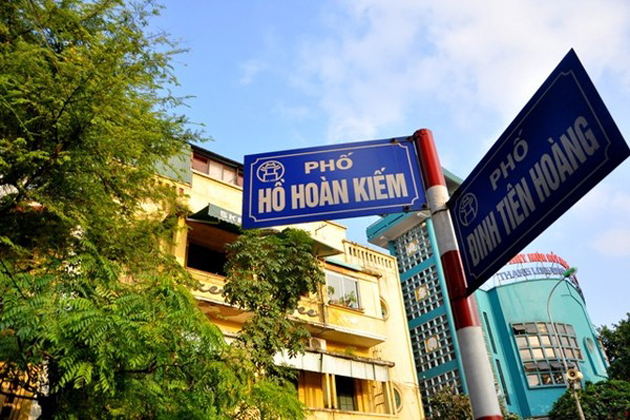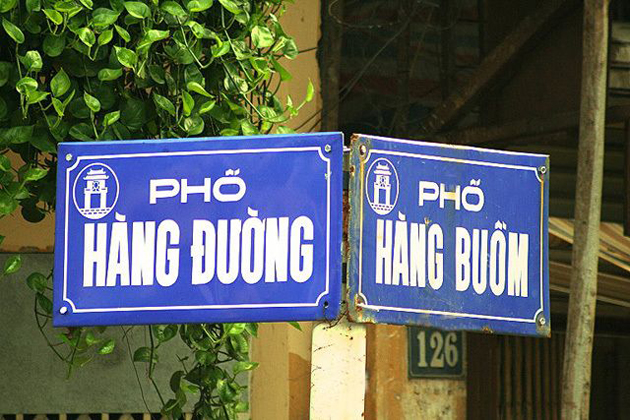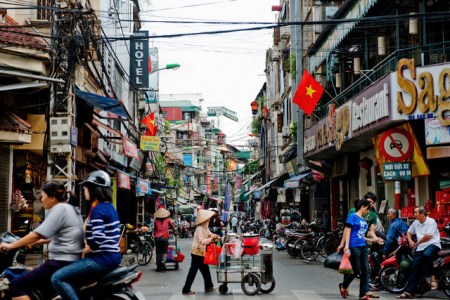A middle-aged Parisian is bored to death. He doesn’t have to work for a living and time hangs heavy on his hands. One day, as he is having a stroll, he hits upon the idea of trying to identify the person whose strange-sounding name serves to designate an obscure blind alley on the outskirts of the city. Taking up the challenge, he tours the town-halls, flips through archives public and private, travels, asks people for information… He spends ten years of his life working rather hard but has found a reason for living.
Such is the theme of a French novel I read twenty years ago. The story is not likely to happen in Vietnam where the major cities have but a few hundred streets each, whose names are quite well-known. A survey of street names in our cities may help the foreign traveler to grasp the mentality of the Vietnamese, the direction, and constants of their culture. Take for instance the case of Hanoi, which has been the country’s capital for almost a thousand years.
The Origin of Street Names in Vietnam
In Vietnamese history of more than 2000 years since Trieu Da conquered Au Lac (an ancient name of Vietnam), generations of the Vietnamese has undergone nearly 1500 years of wars against foreign invaders. From these wars, a lot of heroes and heroines were born such as president Ho Chi Minh or General Tran Quoc Tuan; many places have become legends like Dien Bien Phu or Bach Dang River. “Your name becomes the name of the country” – a lyric from a famous song express the acknowledgment of Vietnamese people to their great personalities and dramatic history.

Data of Street Names in Vietnam
According to the survey, 31% of streets are named after personal names and place names.
- Against Chinese aggression: 58 names
- Against French aggression: 61 names
- Against US aggression: 2 names.
- Names of great personalities (besides those who distinguished themselves in struggles against foreign aggression): 11%.
- Geographical names (besides those connected with struggles against foreign aggression, already mentioned): 40%
- Only a few streets are designated by numbers.
A Closer Look to Street Names in Vietnam
The dominant place is taken by history since the first two categories account for half the total. Of the historical names, those coming most often to the minds of the city officials are those related to struggles against foreign aggression. It is only natural that the Chinese occupation, which lasted more than ten centuries, and French occupation, which spanned eighty years, takes the lion’s share: about sixty names each. American aggression, which happened in recent years, took place at a time when all streets were already named. So, it is illustrated by only two names: Liberation Road (Duong Giai Phong) and Victory over B.52’s Road (Duong Chien Thang B.52) which has later become Truong Chinh road.
Names of Personalities
Historical personalities, who are not resistance heroes, are generally scholars, more or fewer poets, of the classical period (before the impact of the West); many figures of the first category, including generals and kings, are also scholars and poets. There is only one foreign name, Yersin, the father of anti-plague serum. The street hearing his name runs close to the statue of his master Pasteur, the only foreigner to have his statue in the capital.

Besides, many street names of Hanoi, especially those connected with heroes of patriotic wars (the Trung Sisters, King Le Thai To, King Quang Trung, or Nguyen Hue – his other name, etc.) are found in all cities of Vietnam.
Names of long-established history
Purely geographical names carry a nostalgic flavor from history, for they designate ancient villages (Cat Linh, Buoi, Gia Ngu…), ancient public places (Trang Thi: Place where literary examinations were held in olden time; Trang Tien: Place where coins were minted…); or ancient guilds of Hanoi old quarters (Hemp, Silk, Fish, Rice, Sails, Brine streets, etc.).

An in-depth and comparative study of street names in Vietnamese cities may be the subject of an interesting Ph.D. thesis. As I never nurtured that ambition, I’ll stop here.



